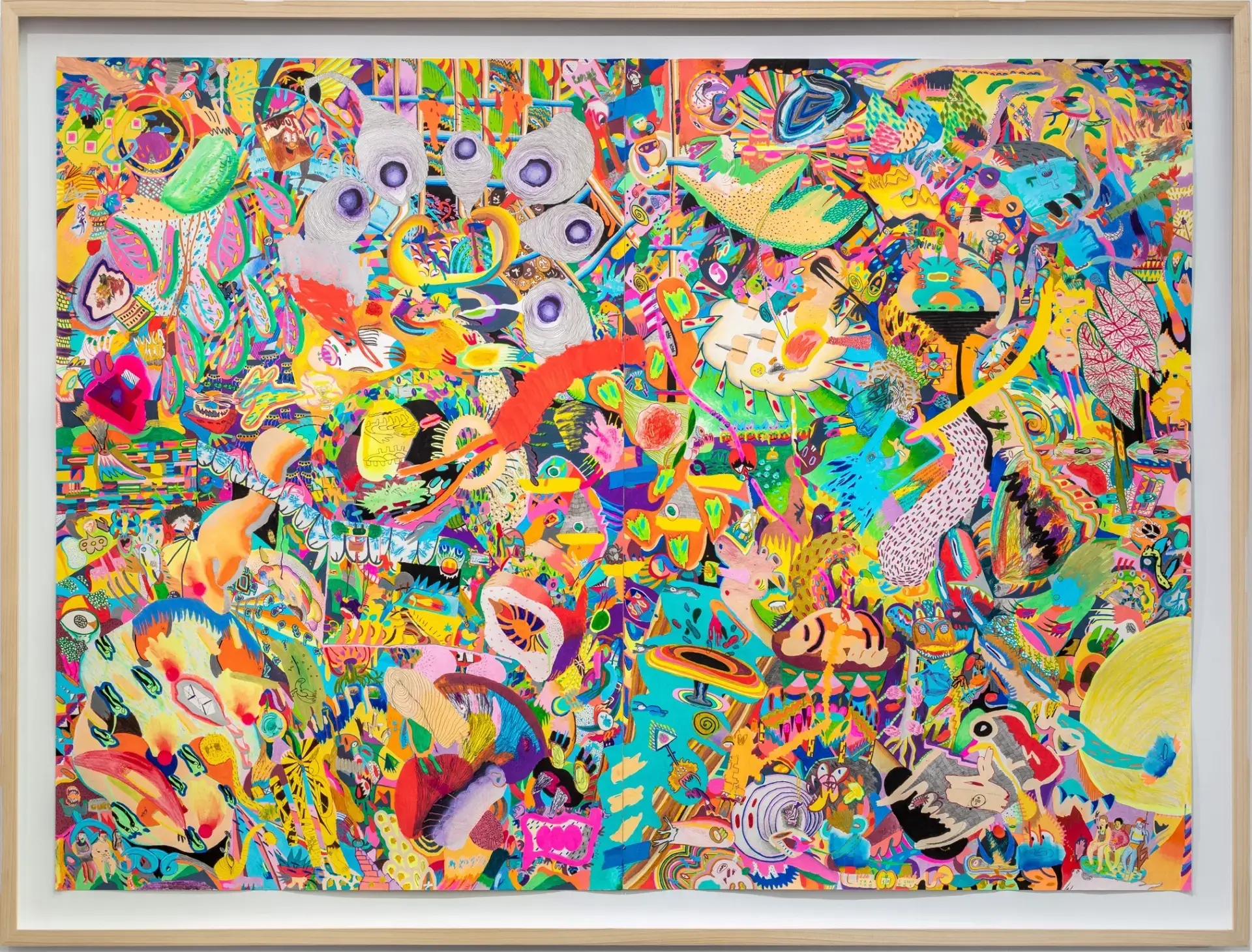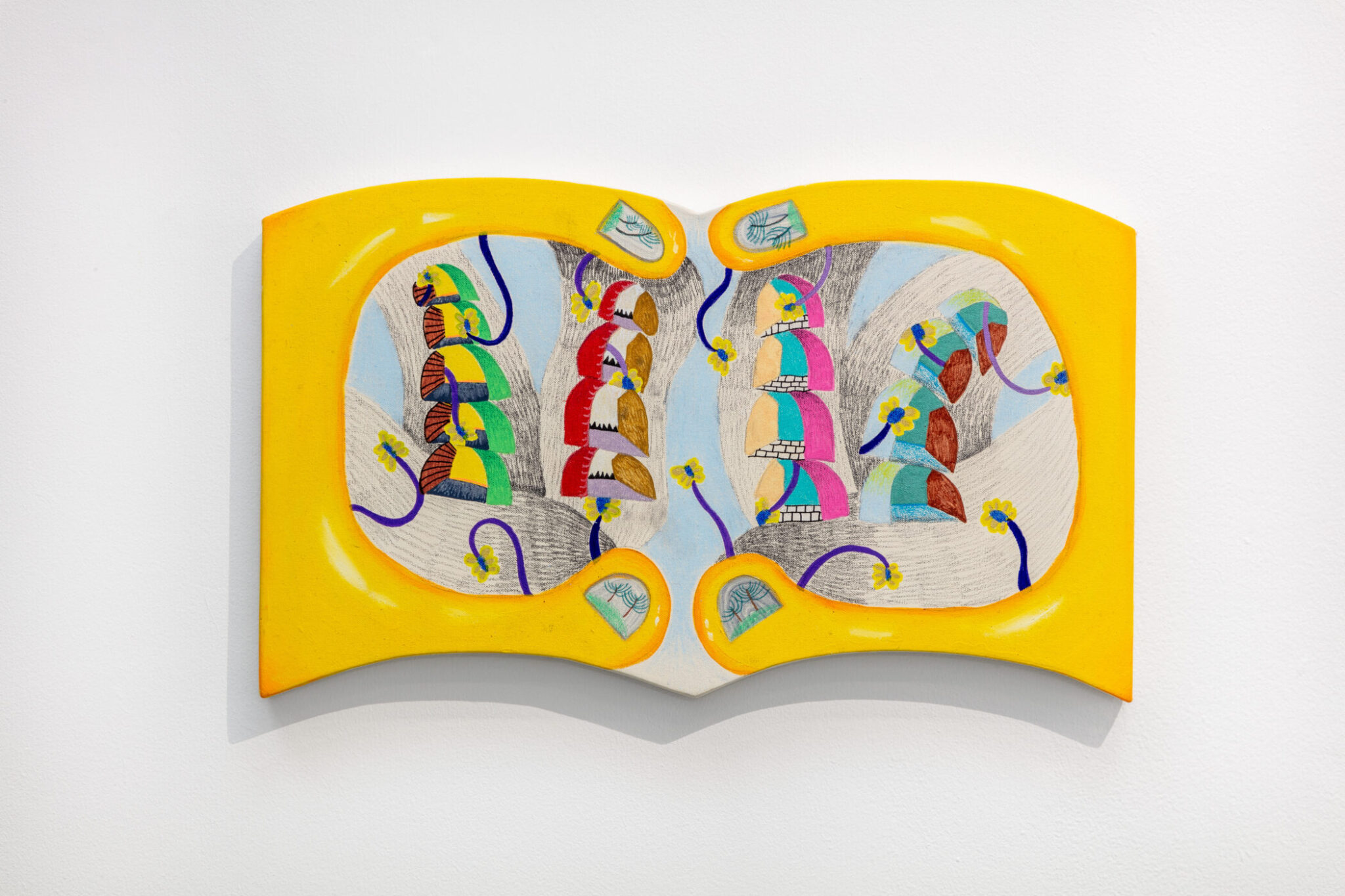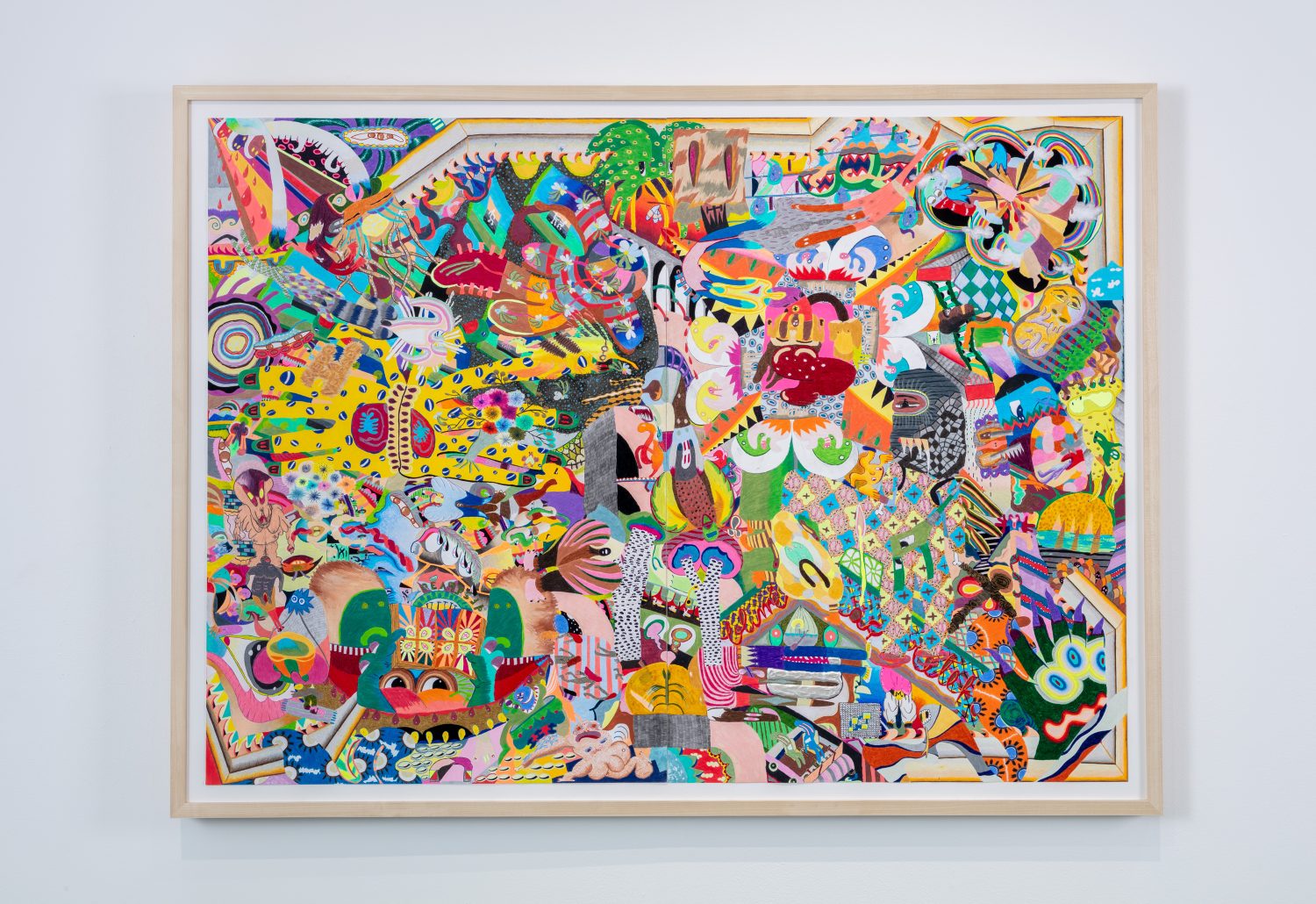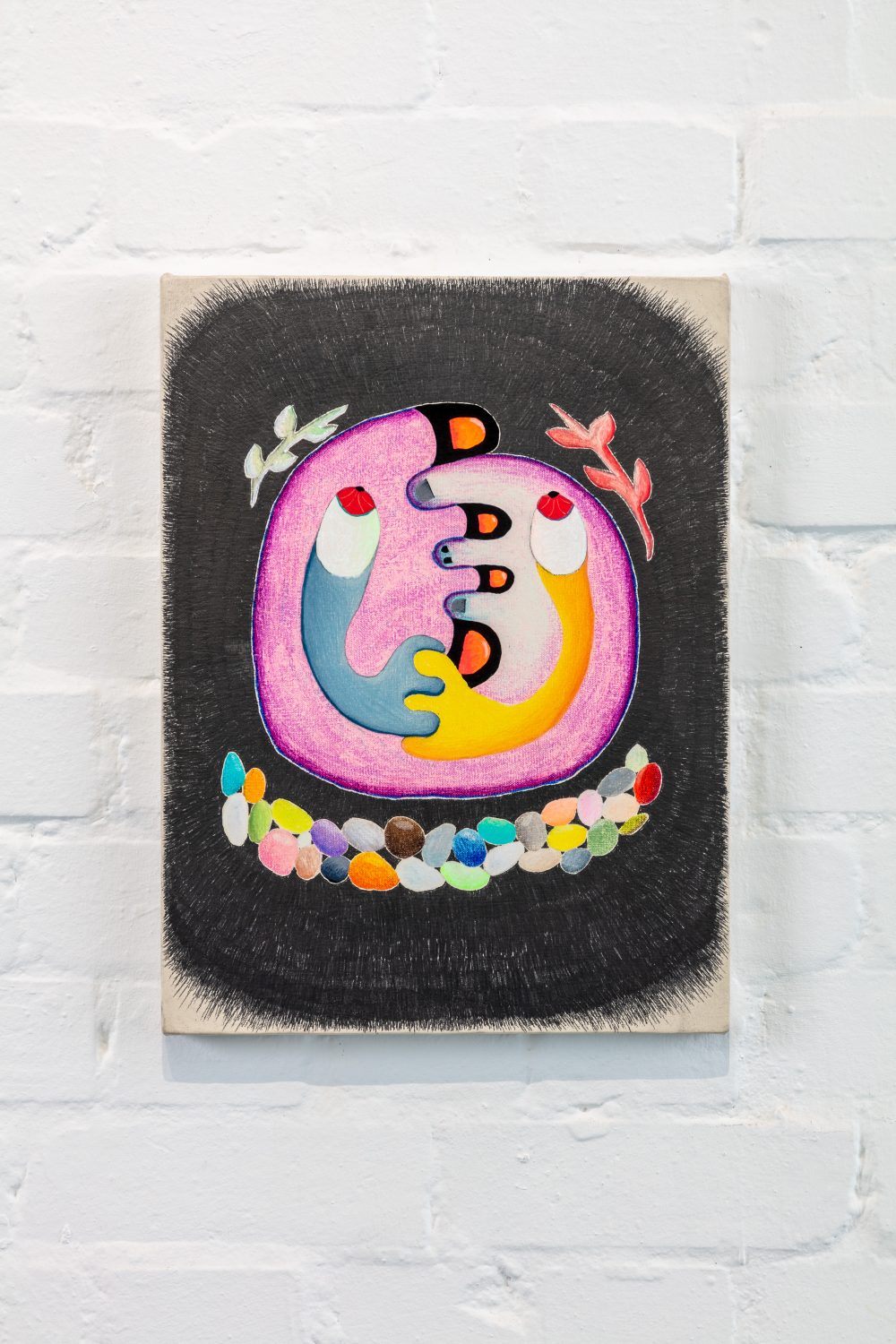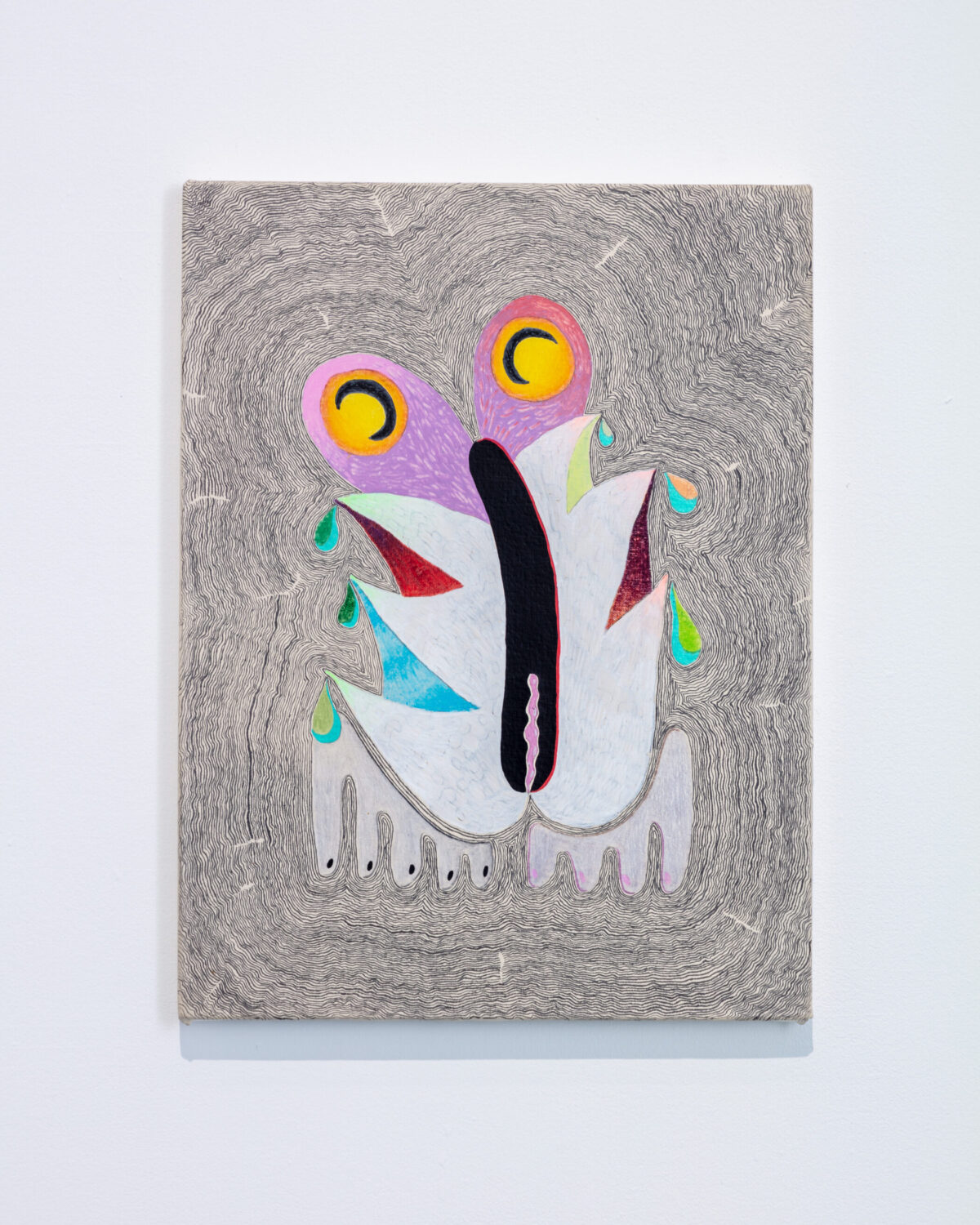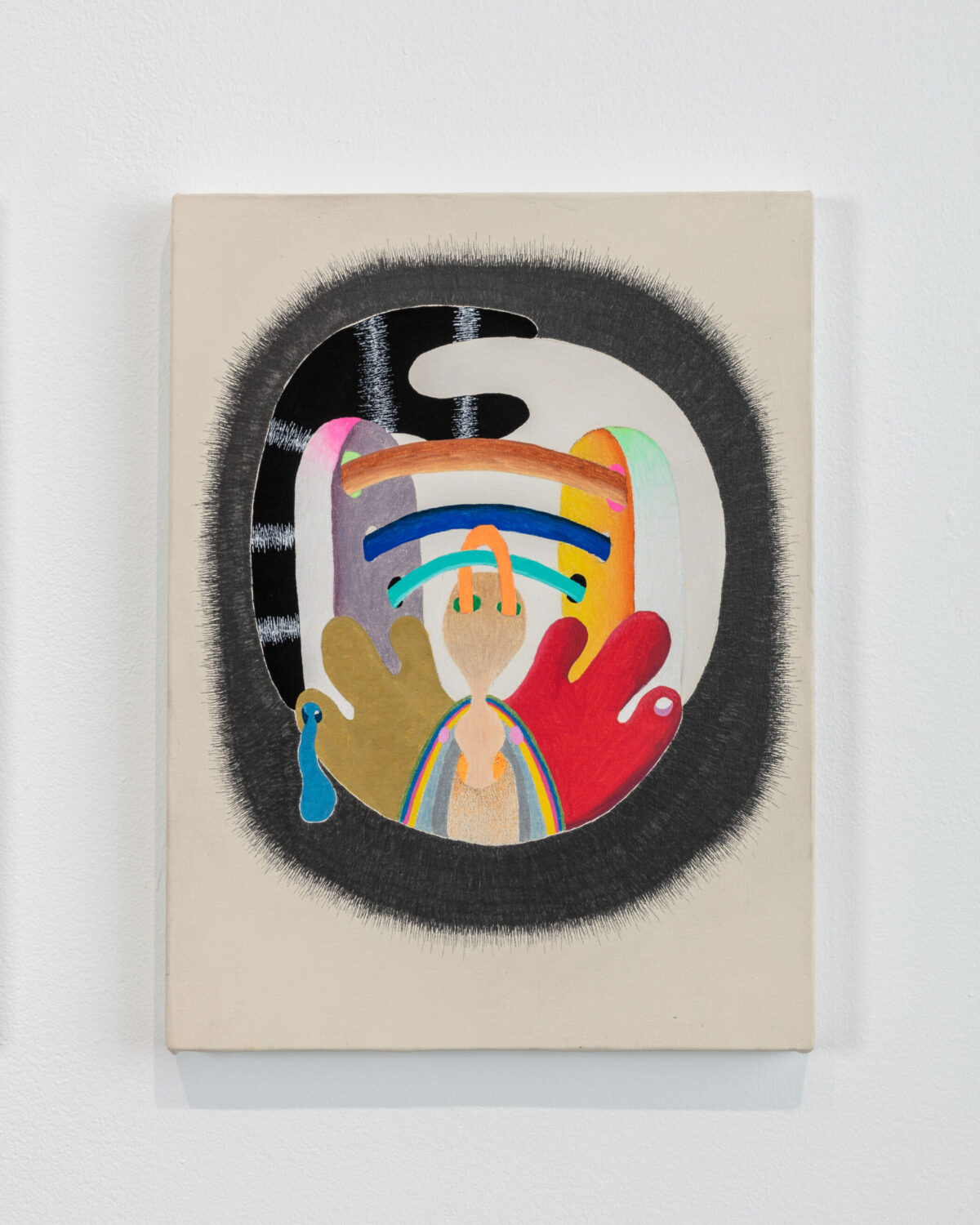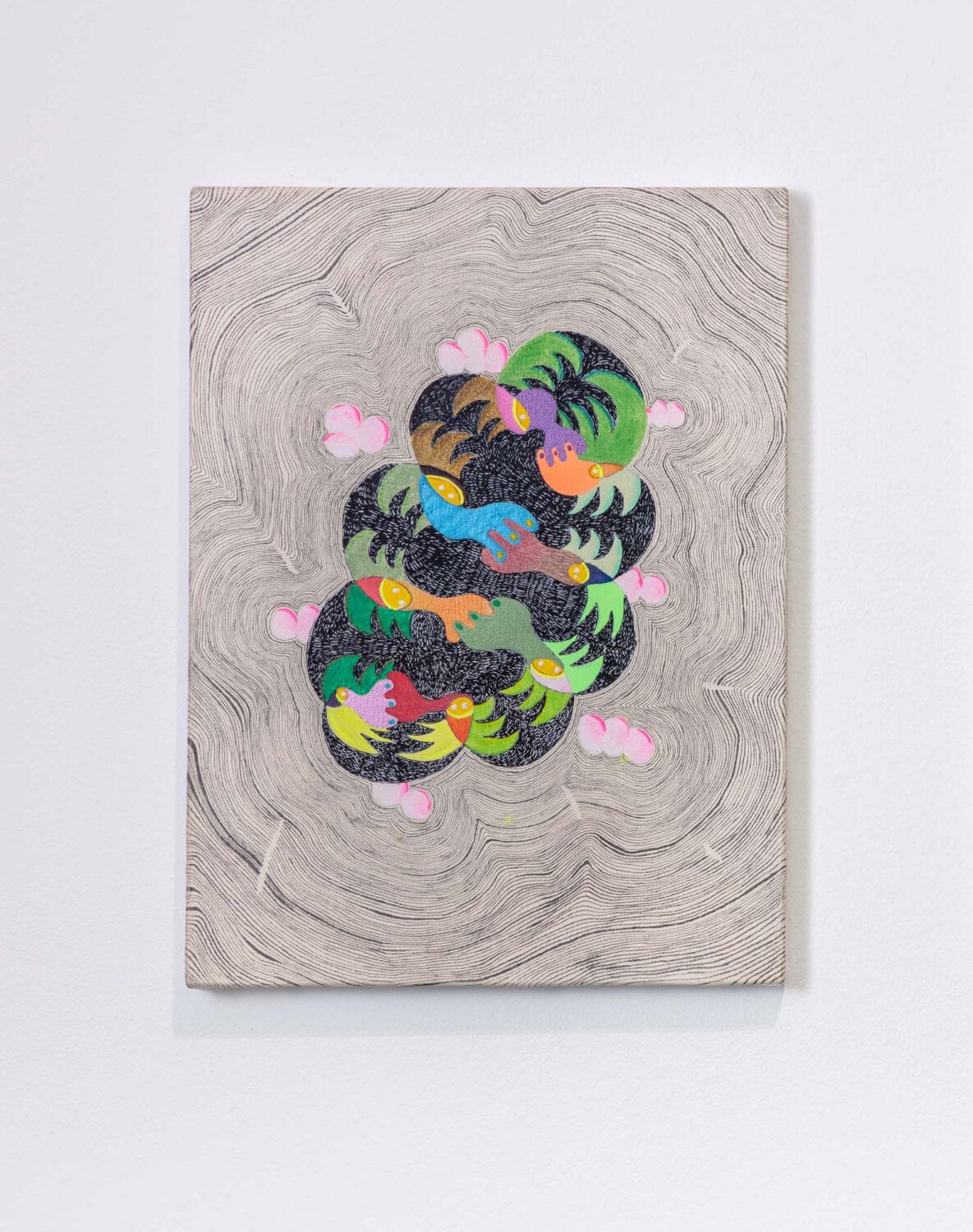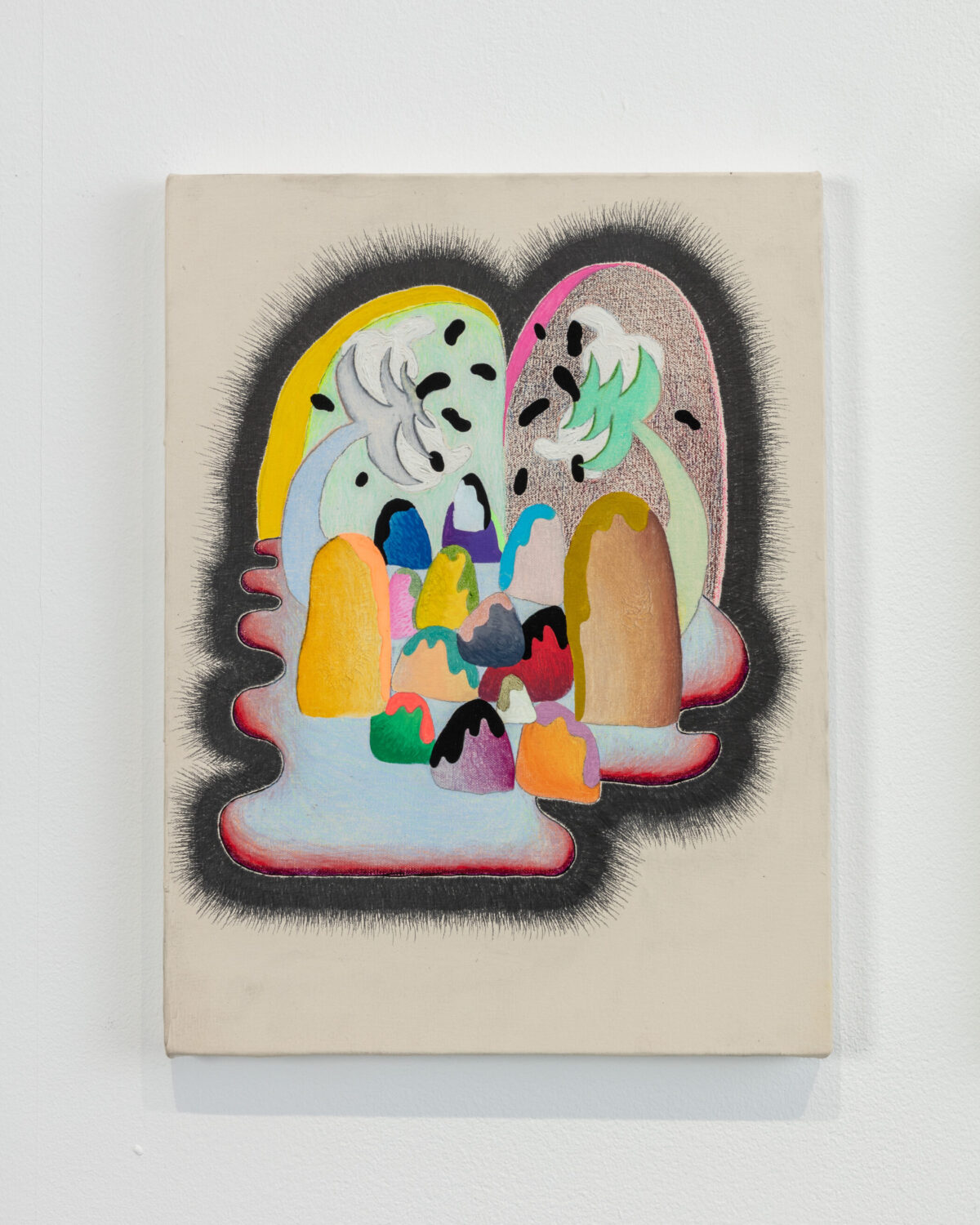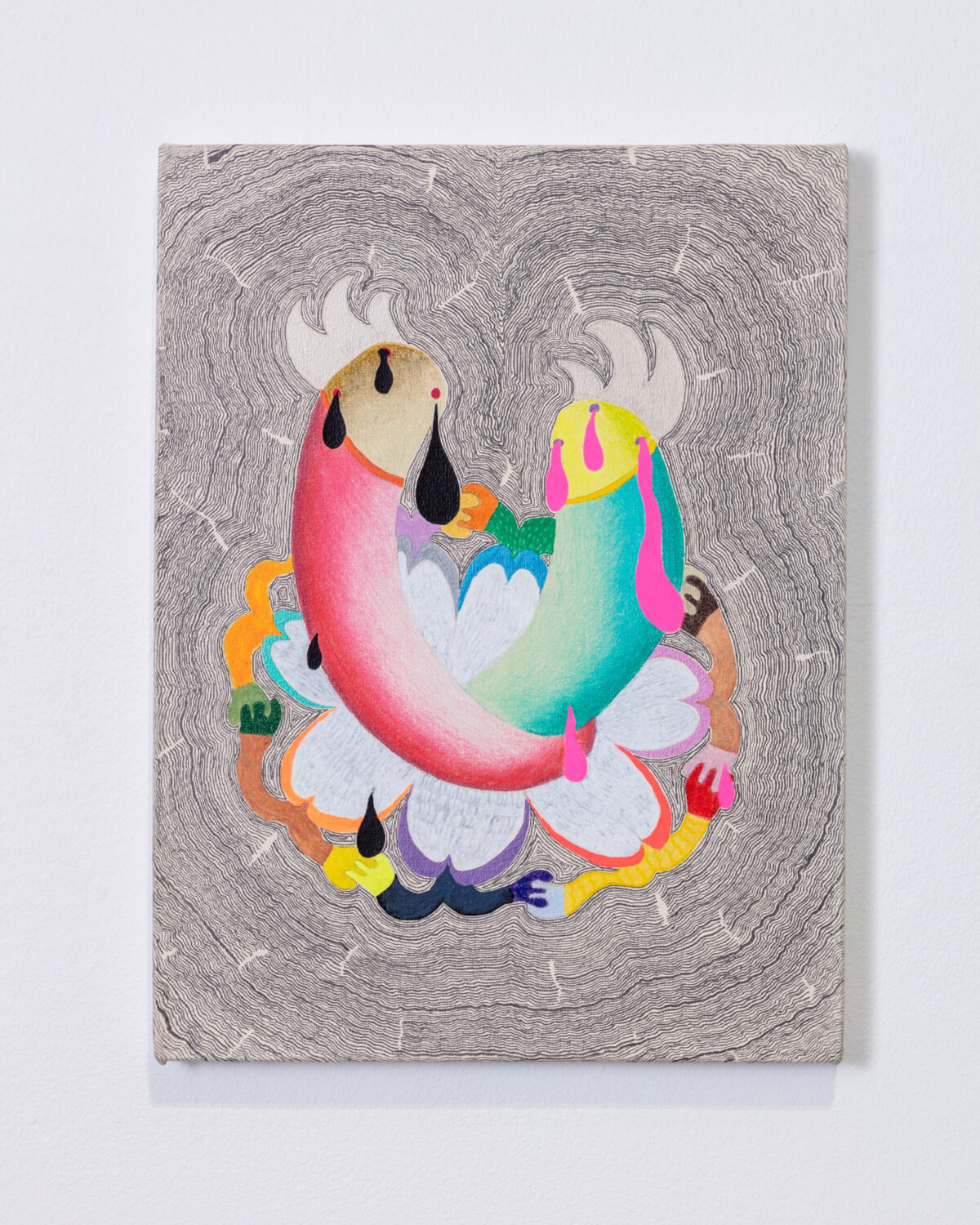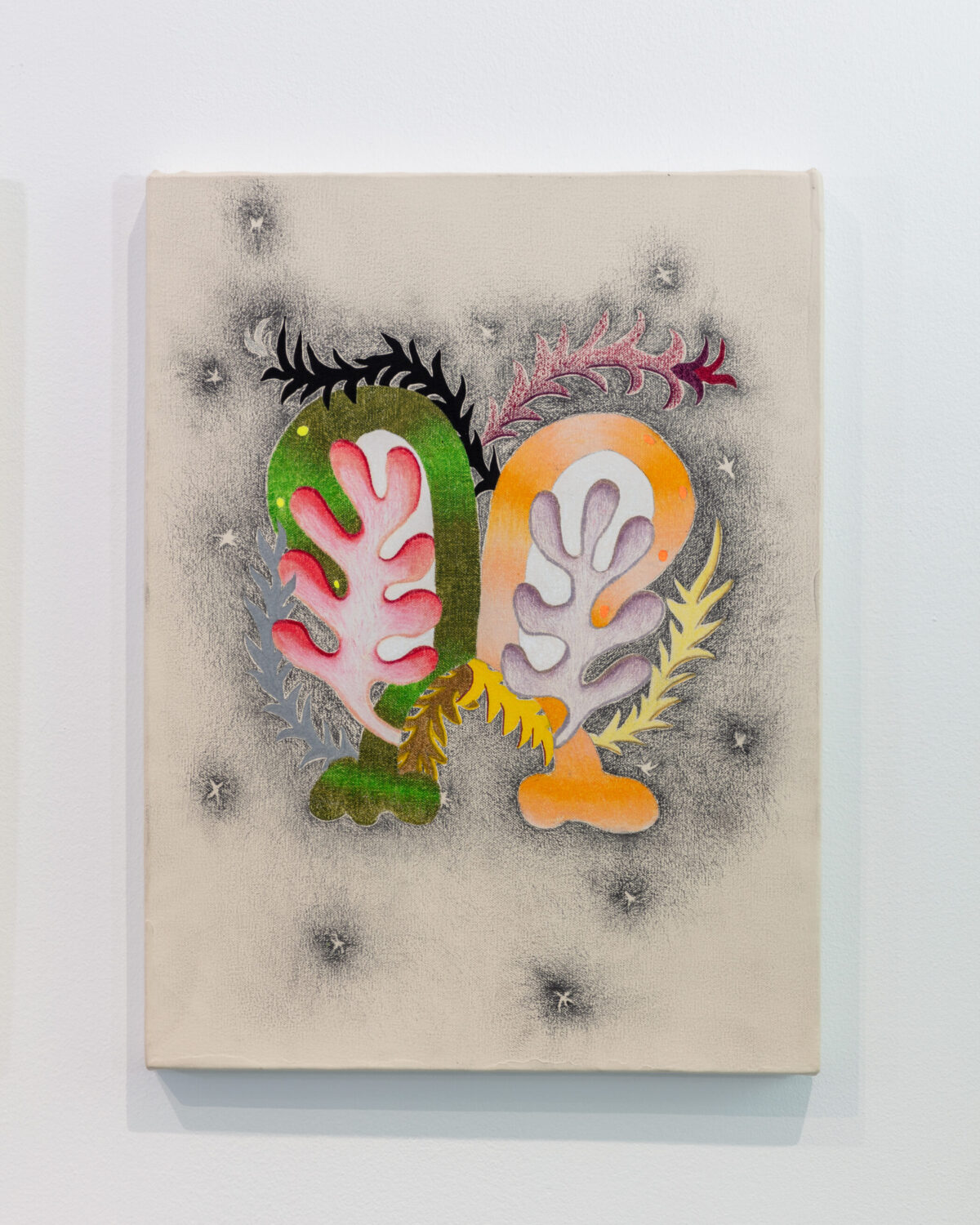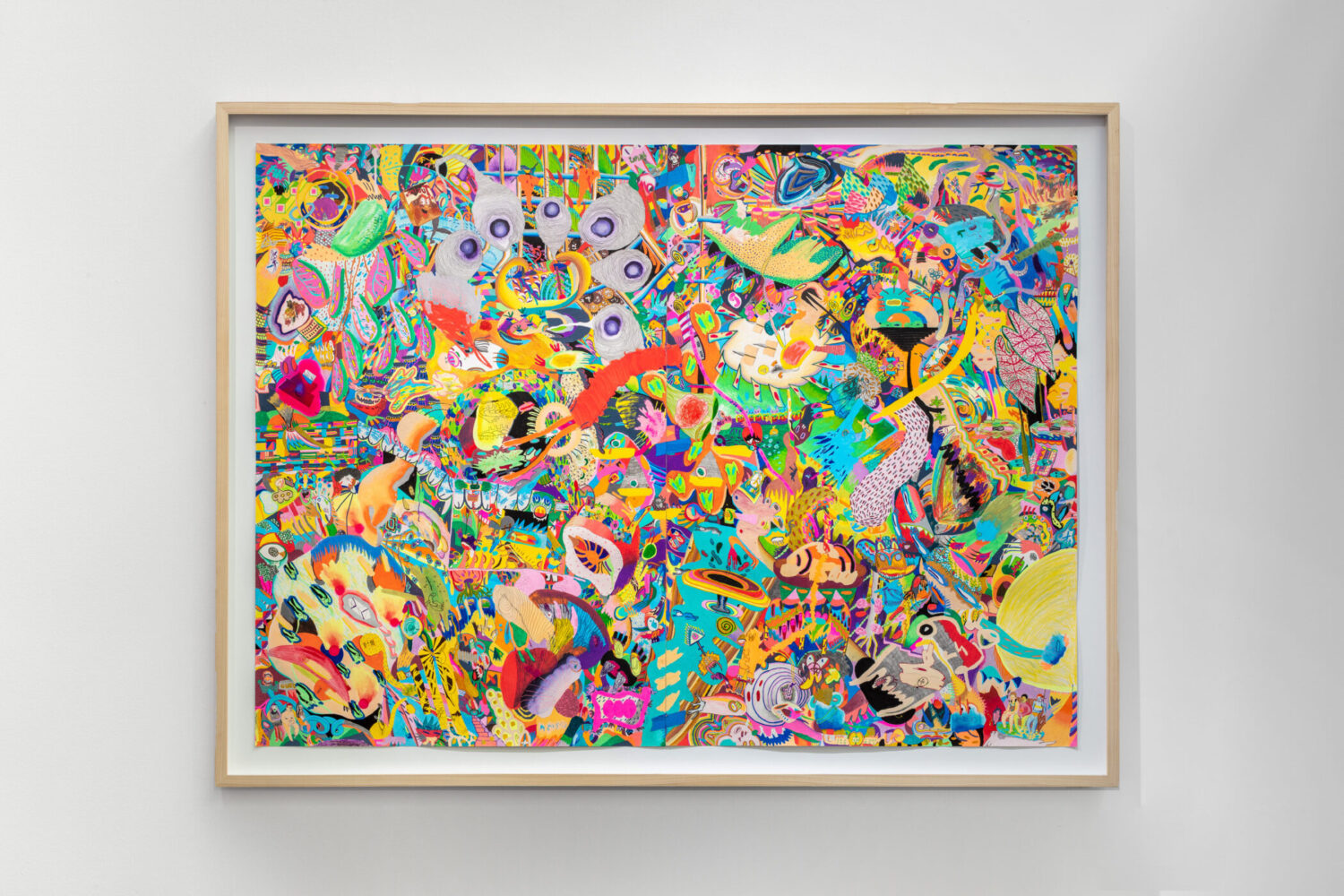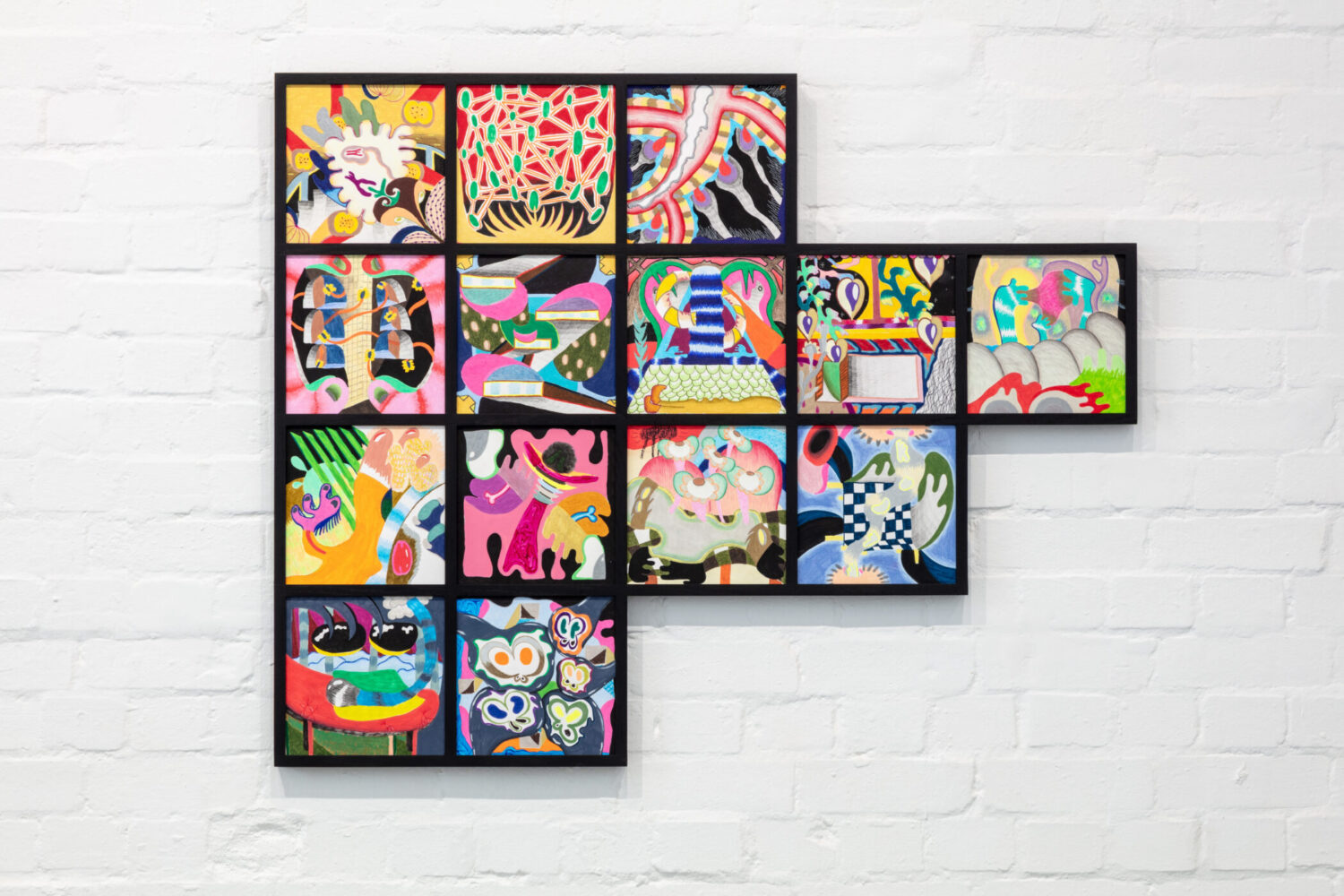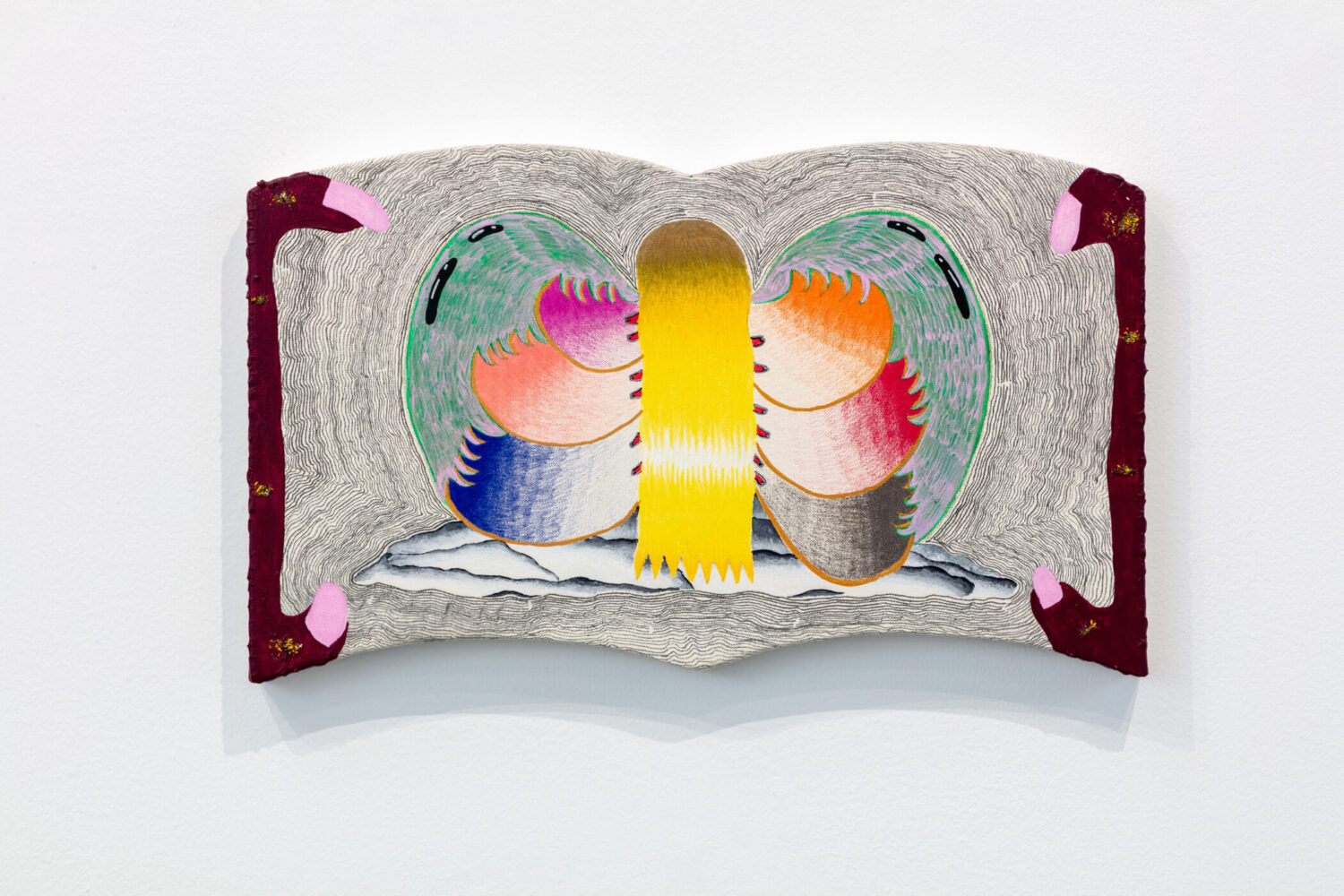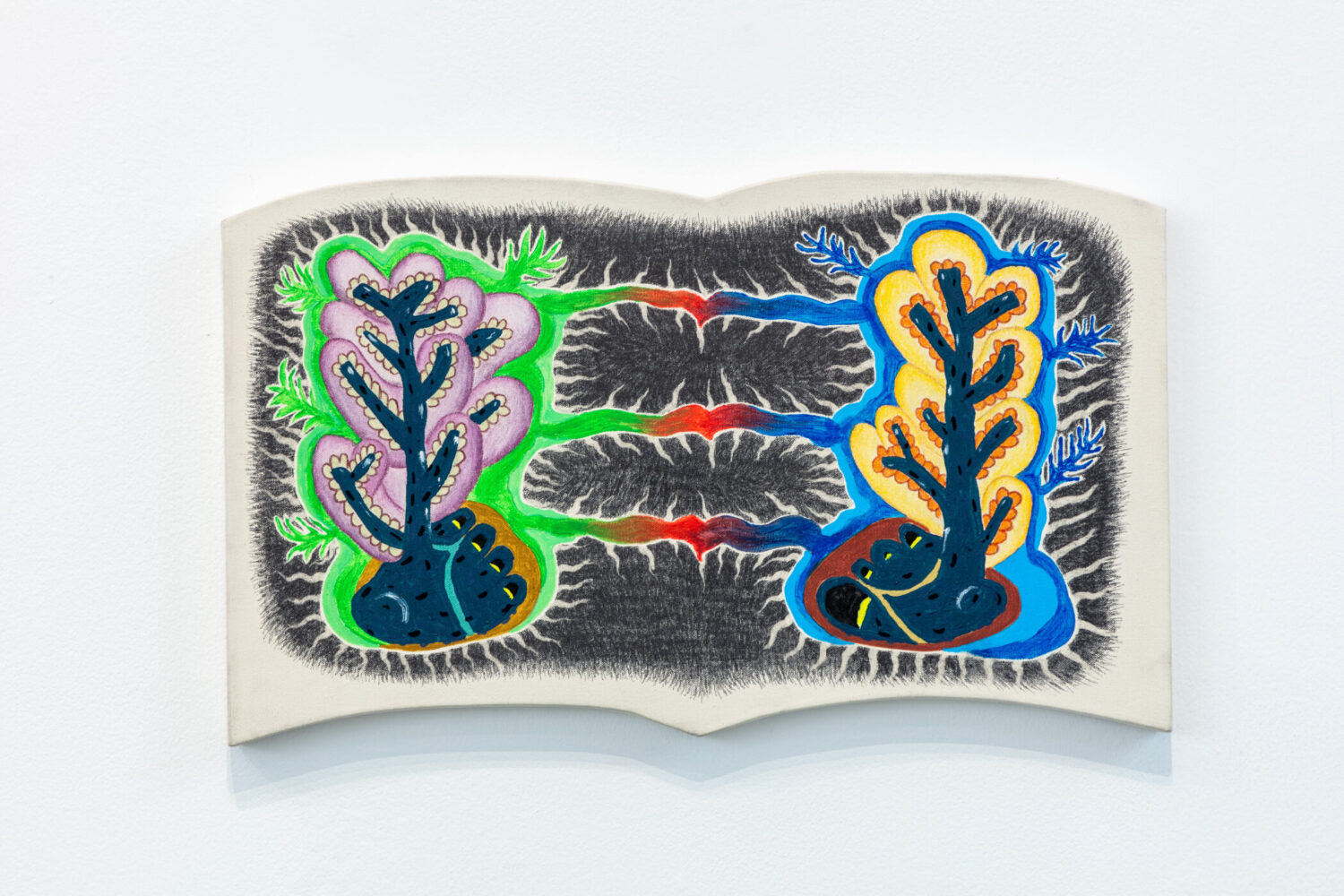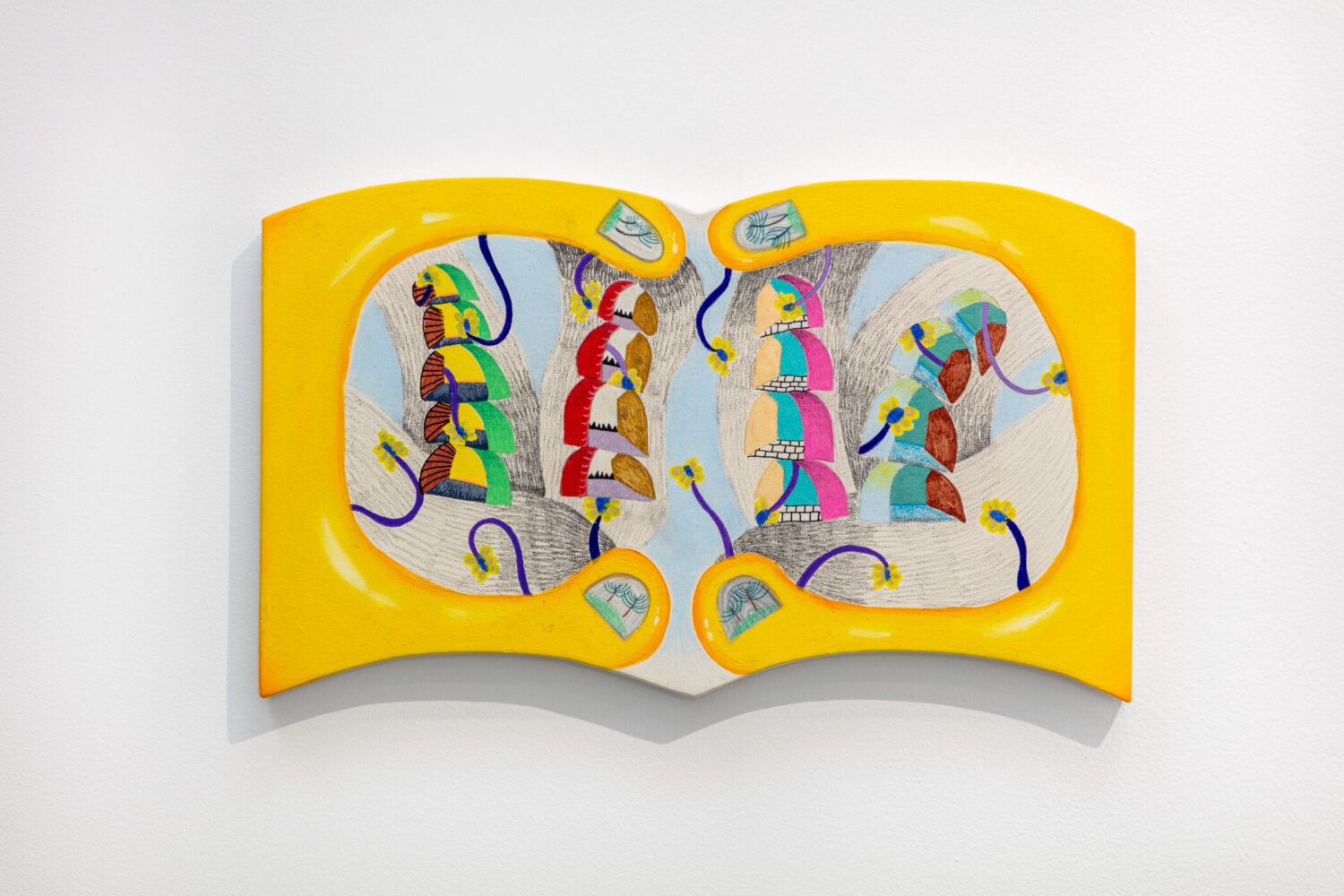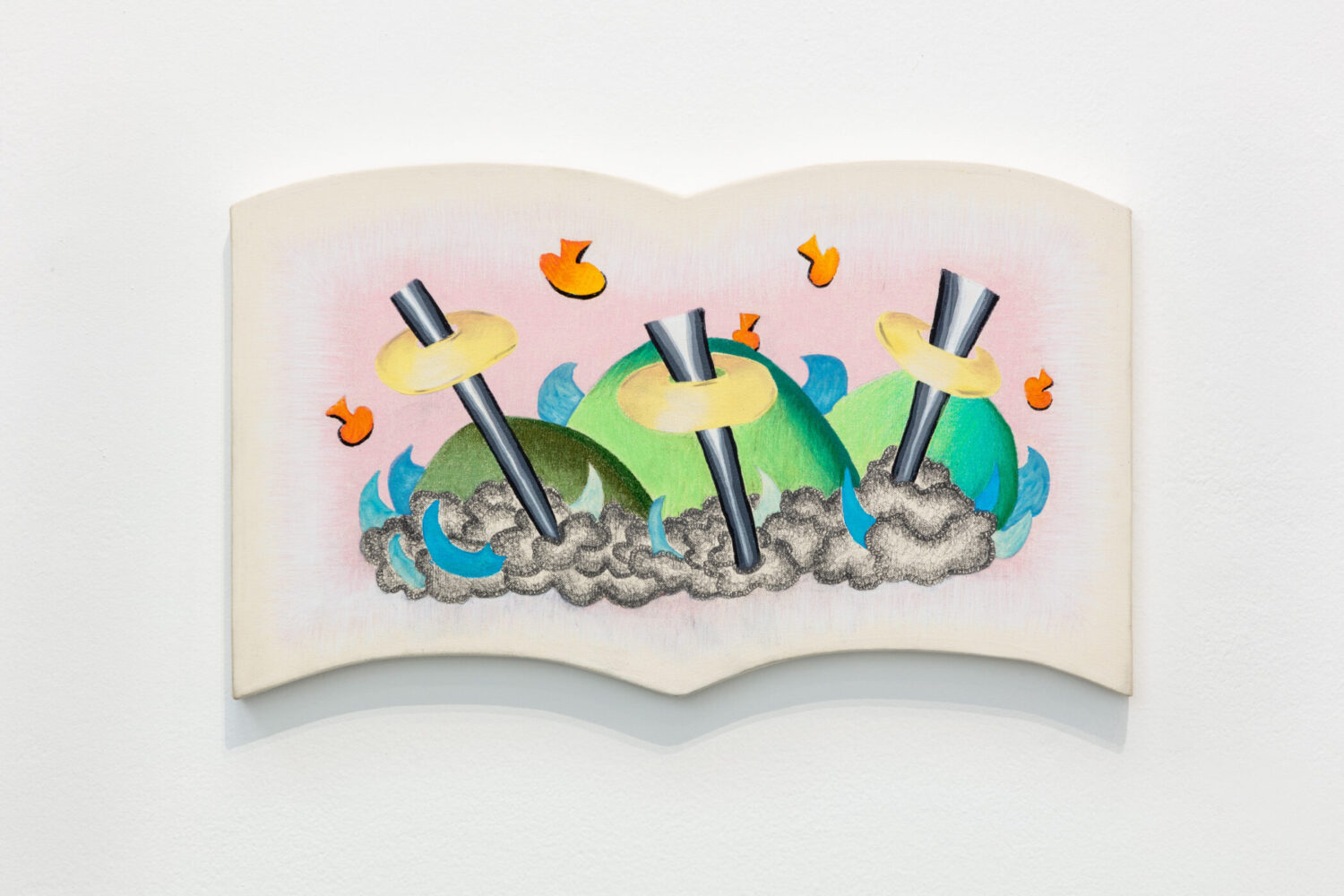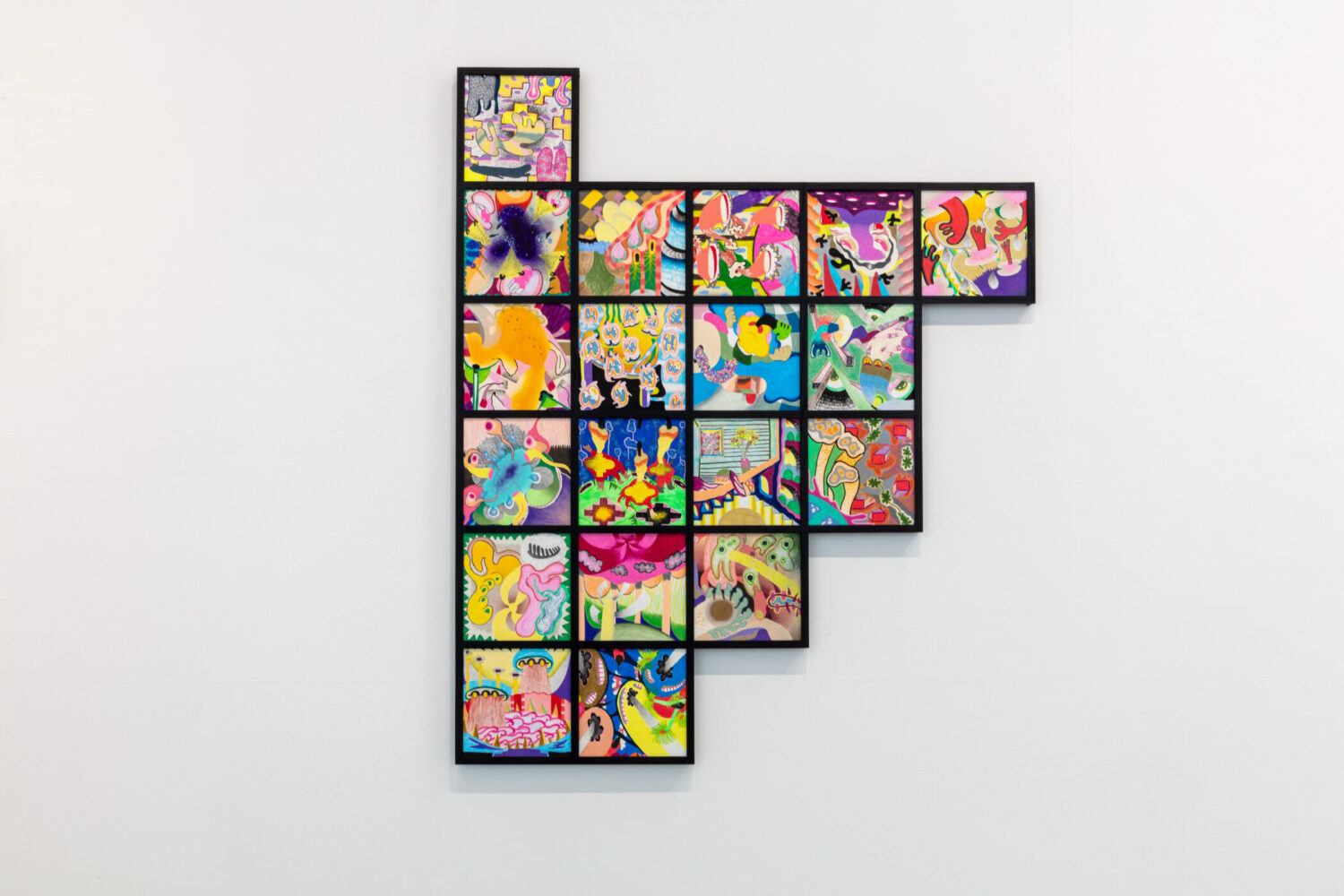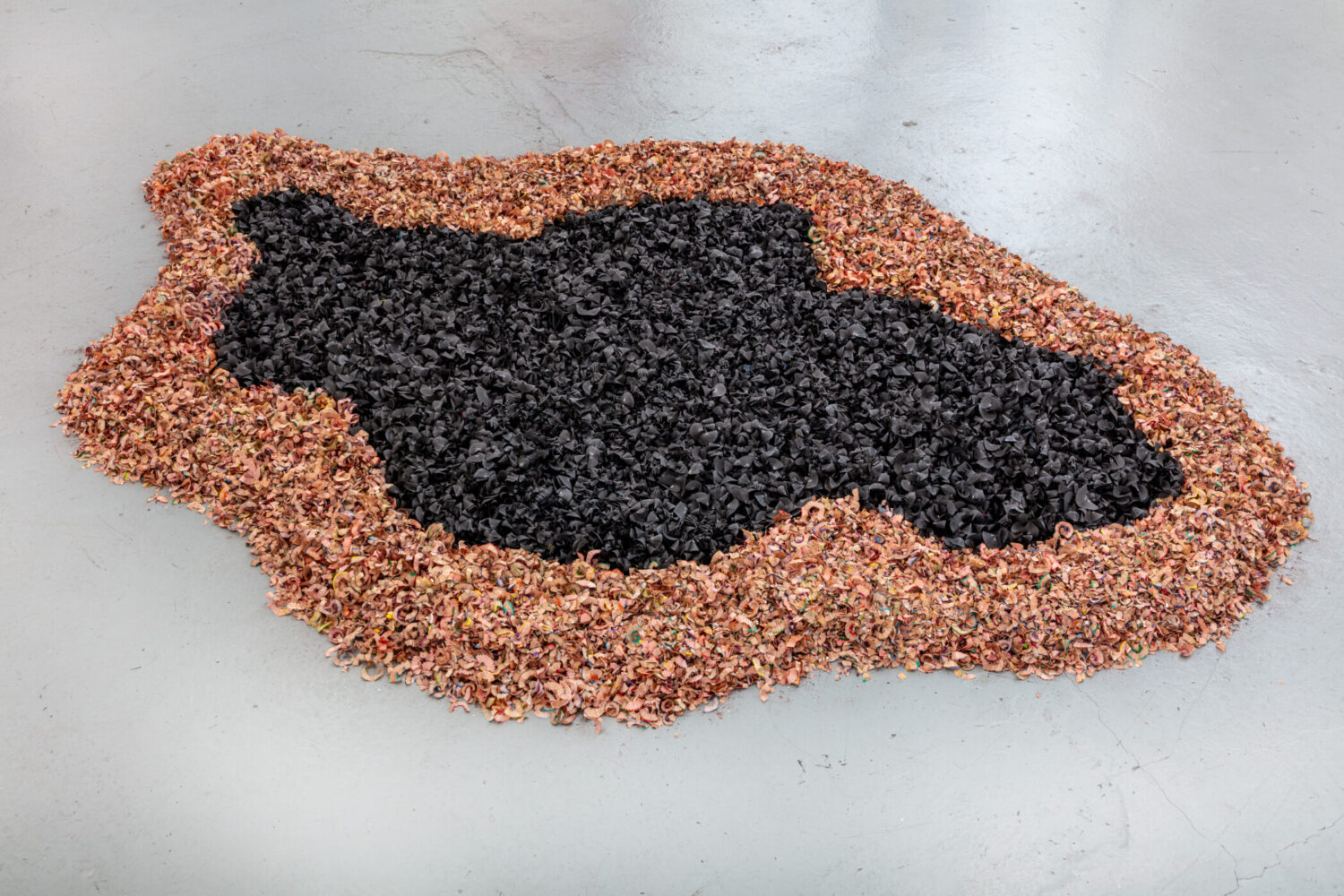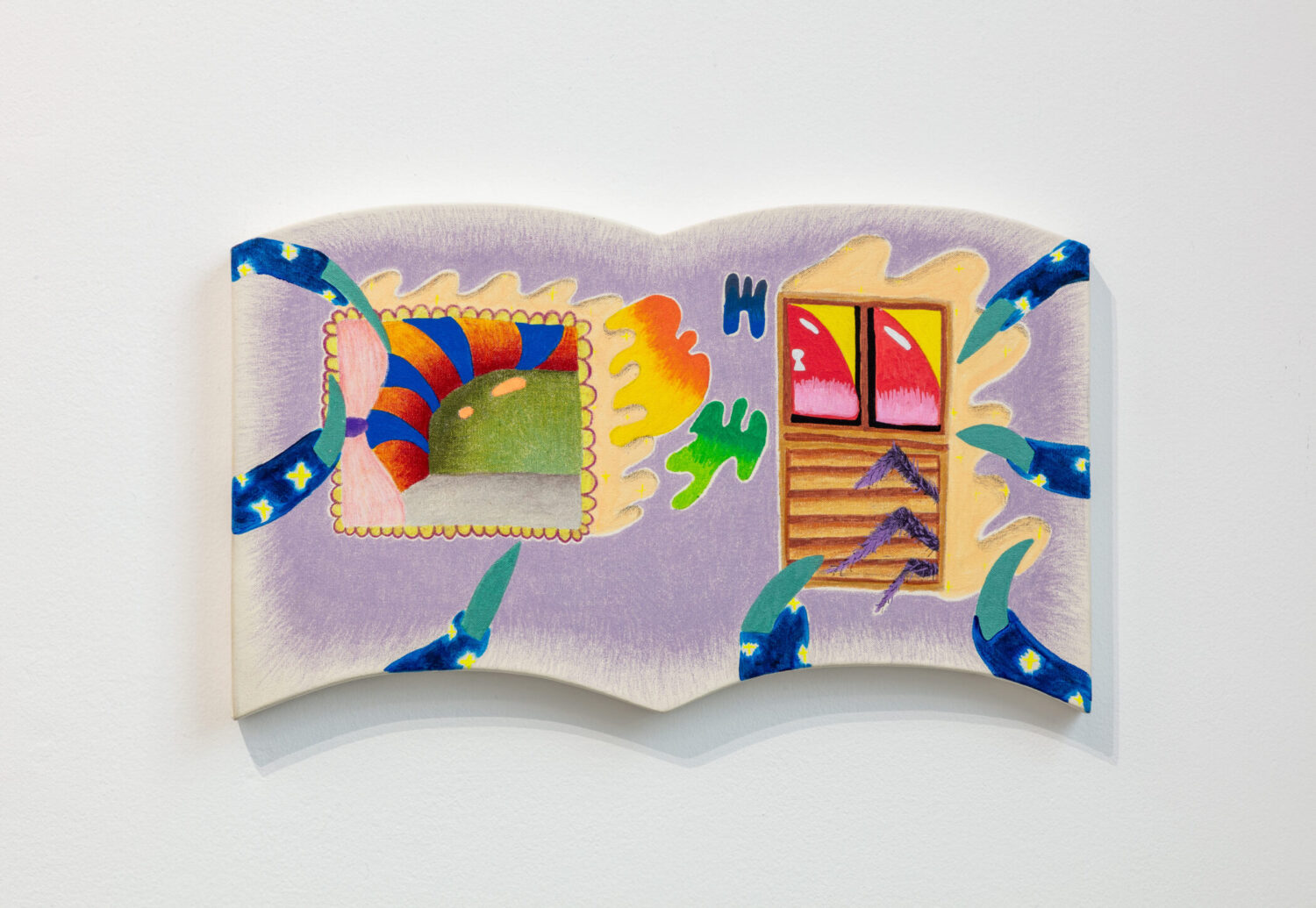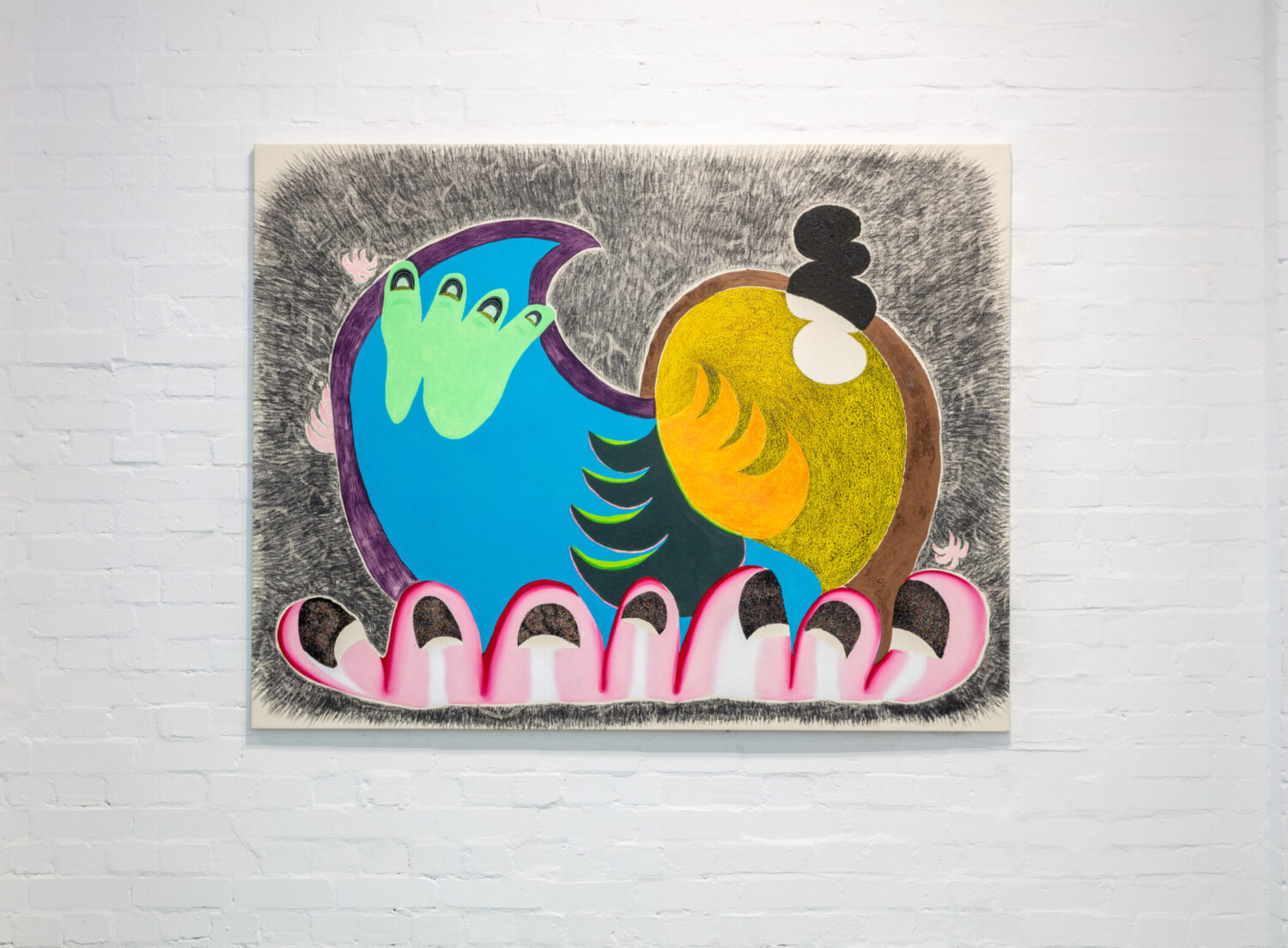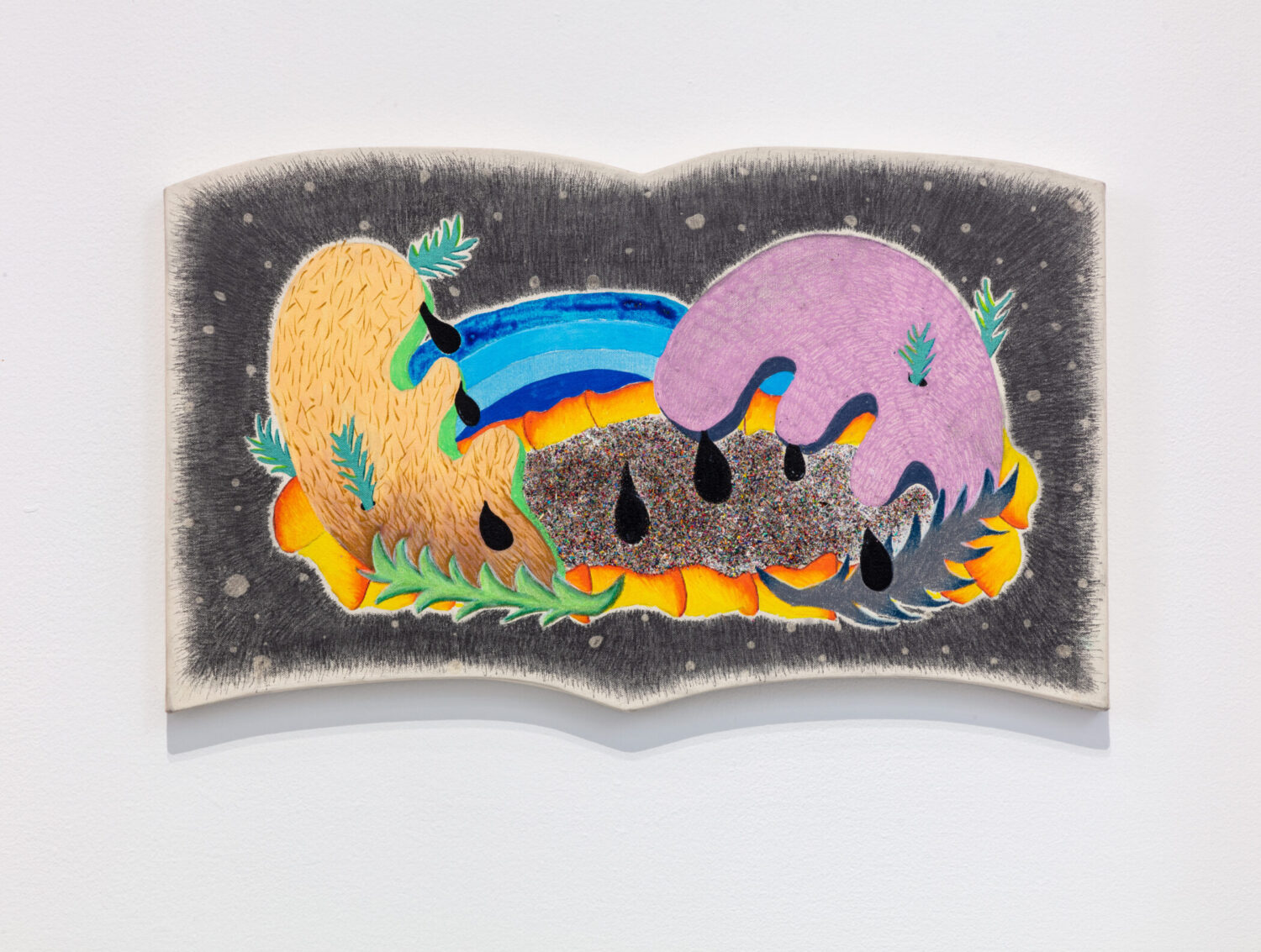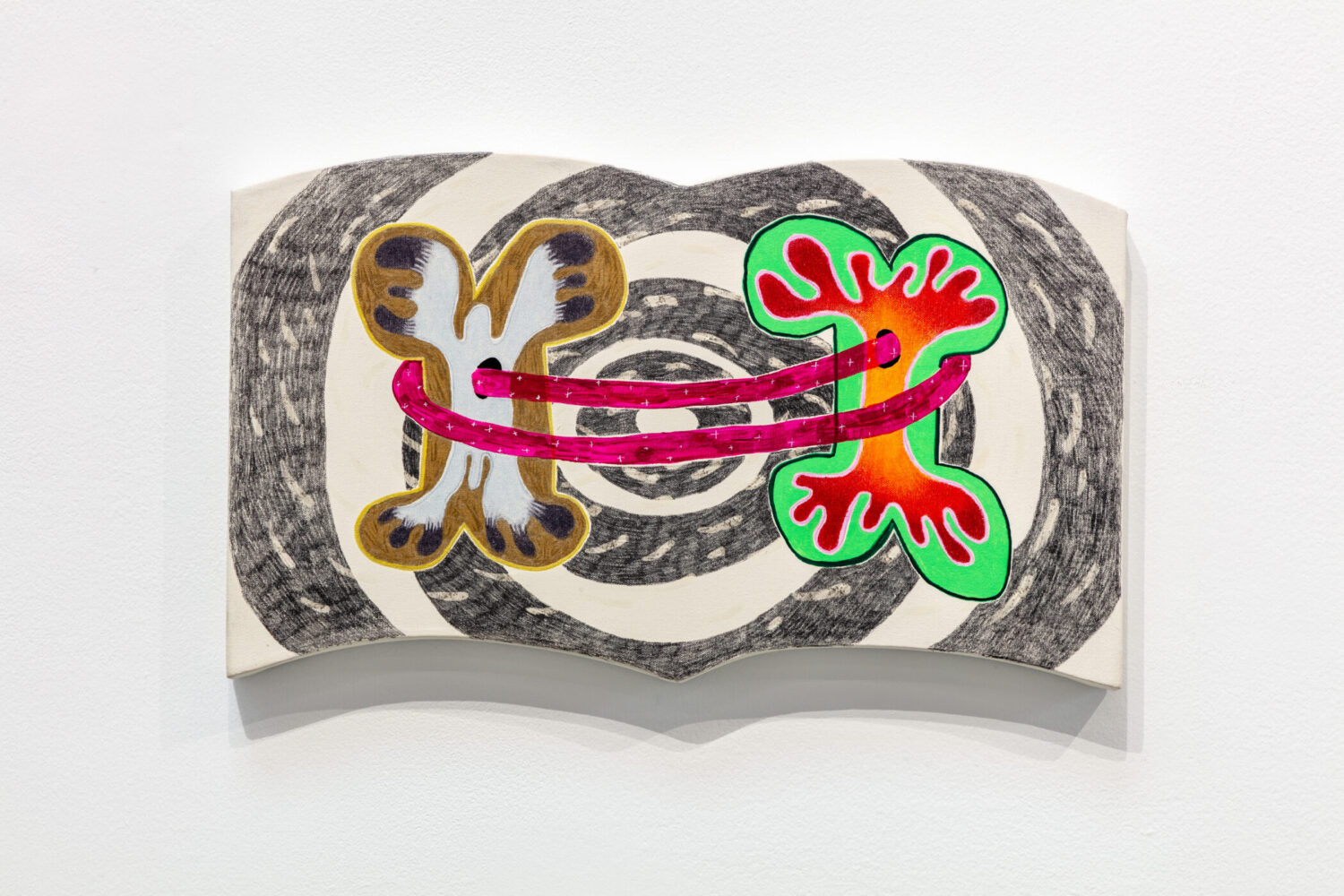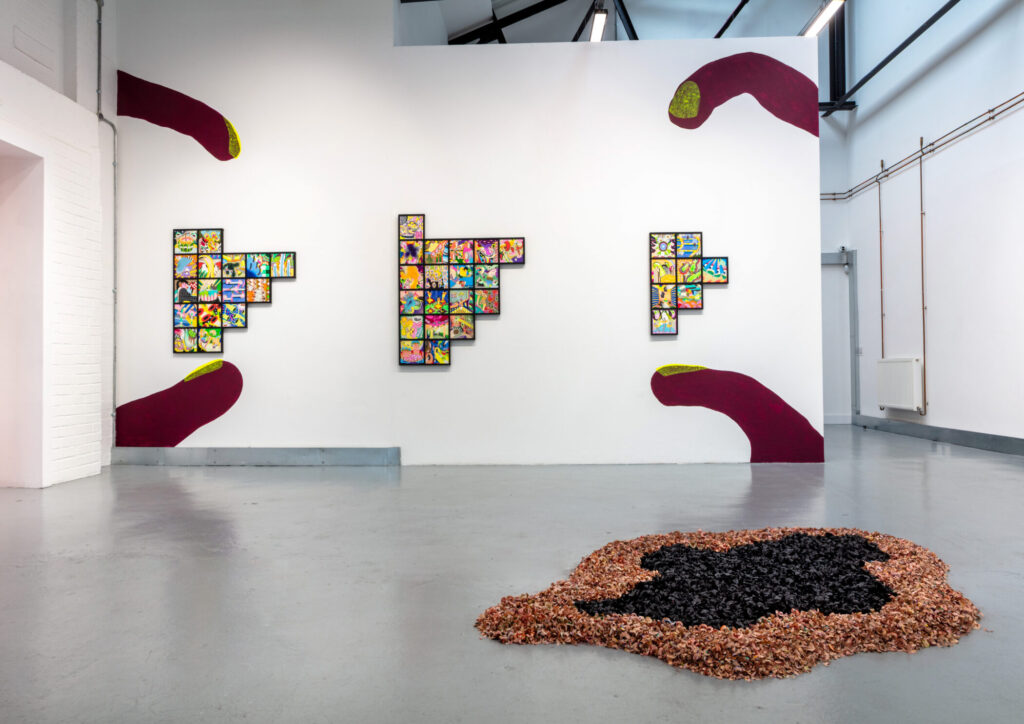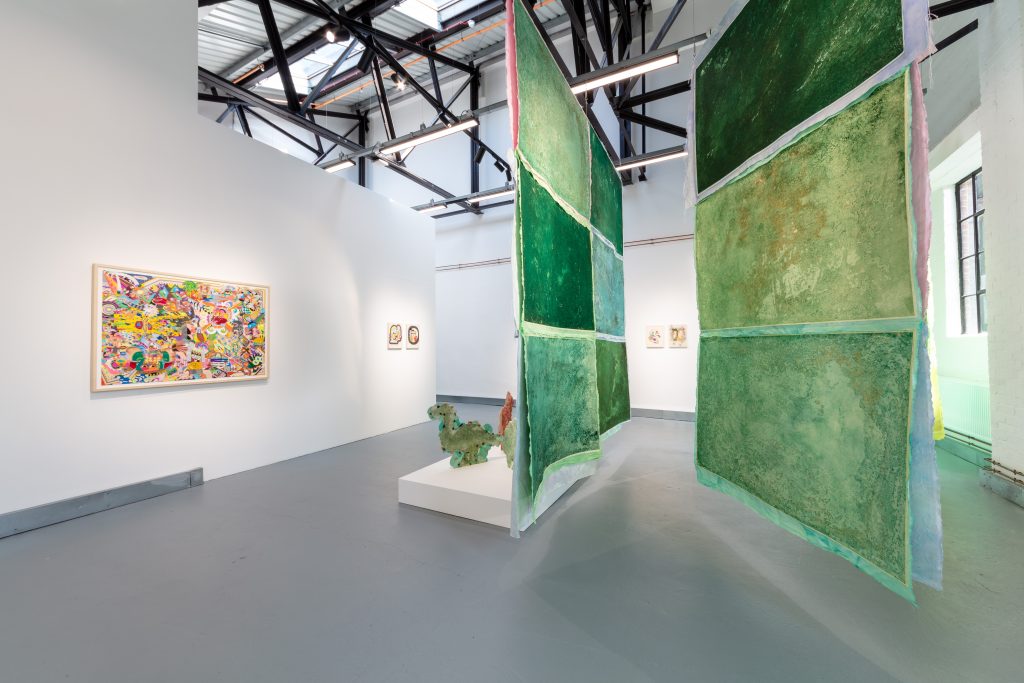Works
Video
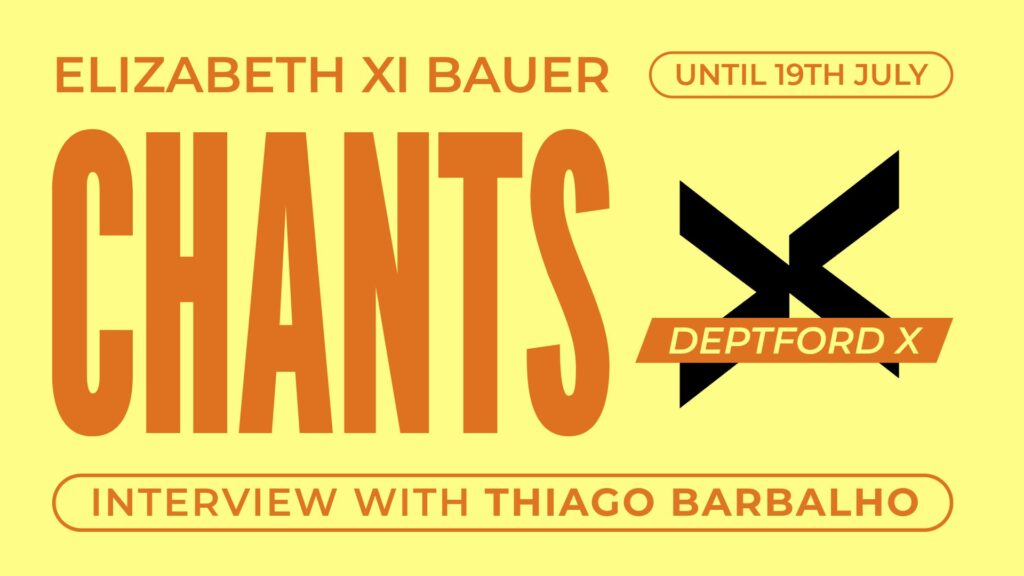
Video
Interview with Thiago Barbalho
Thiago Barbalho’s 'Chants' explores the intersections of visual language and ancestral technology, weaving together personal history, mass culture, spiritual practice, and philosophical inquiry. Drawing from a rich range of influences, the Brazilian artist transforms experience into intricate visual compositions that question the boundaries of writing, communication, and scale.
At the core of the exhibition is Barbalho’s concept of visual writing as ancestral technology. Drawing—mark-making in its most elemental form—is presented as a primordial tool, predating conventional writing. In this context, the act of drawing is inseparable from writing; each gesture, each word, becomes a symbol imbued with meaning. Barbalho’s work frames drawing as a technology that has accompanied humanity since time immemorial— enduring, immediate, and accessible. By using mass-produced tools like coloured pencils and markers, his work underscores the direct connection between thought, gesture, and material form, reaffirming drawing as both an ancient practice and a vital contemporary medium.
Credits: Elizabeth Xi Bauer Gallery
